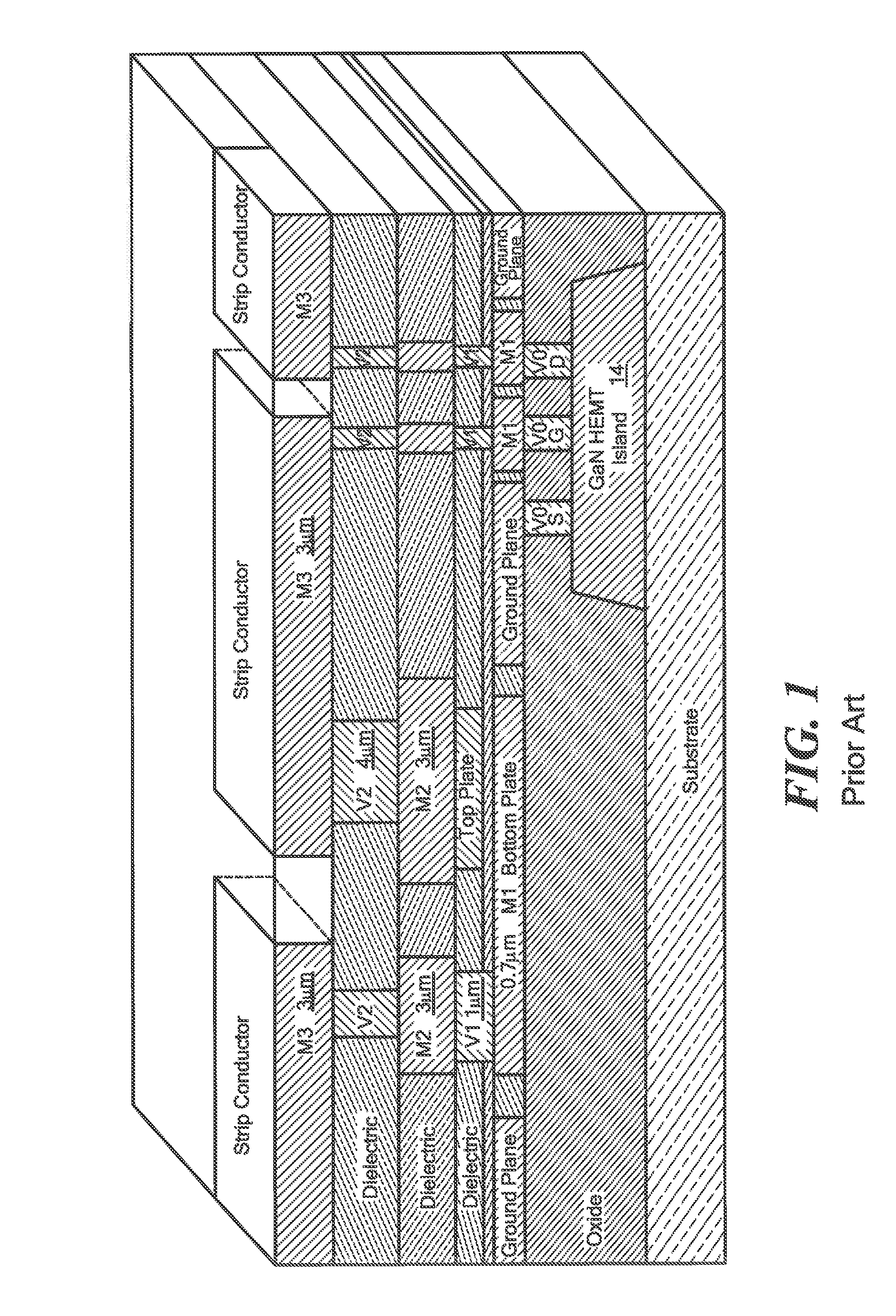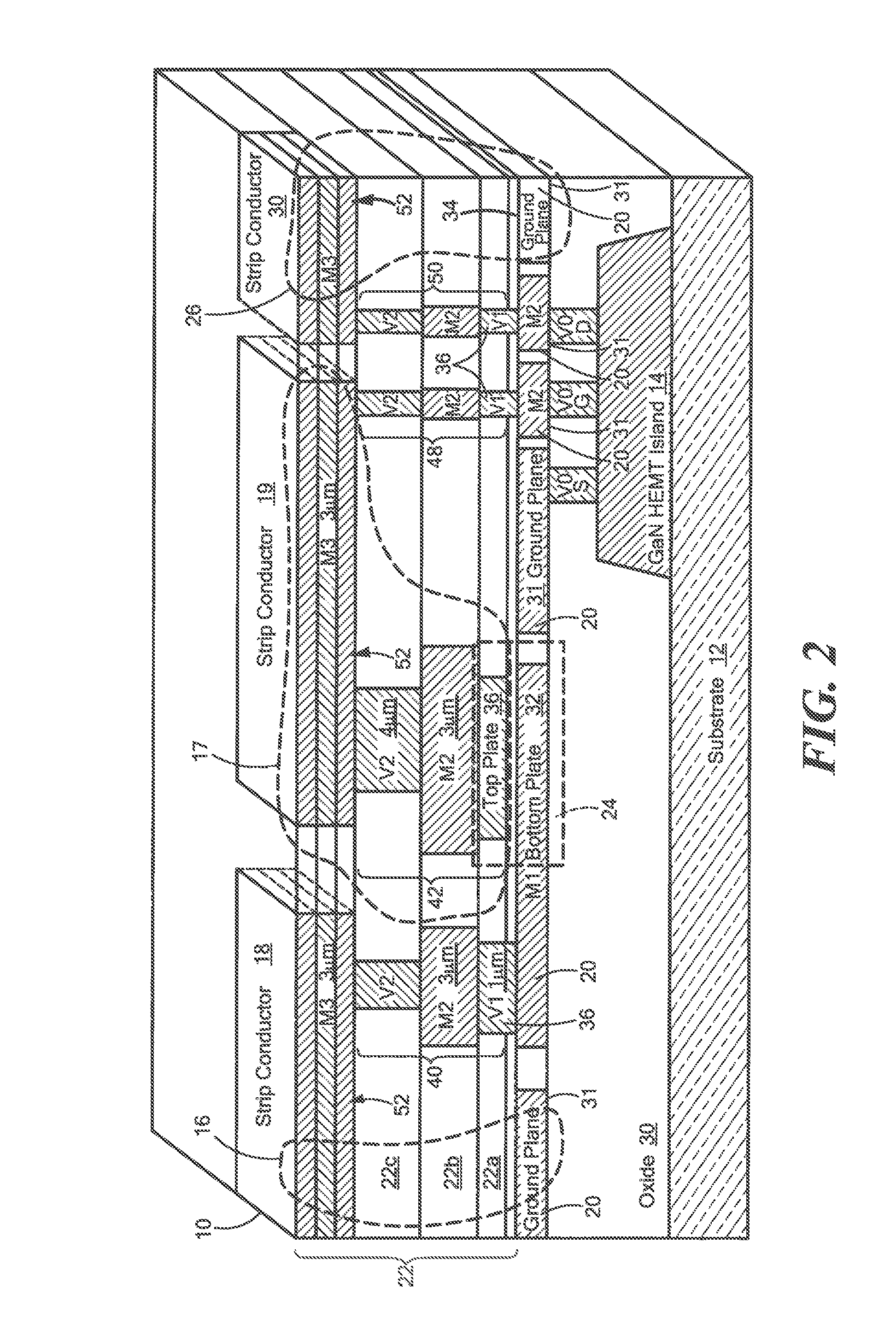Microwave integrated circuit (MMIC) damascene electrical interconnect for microwave energy transmission
a technology of integrated circuits and electrical interconnections, which is applied in the direction of electrical apparatus, semiconductor devices, and semiconductor/solid-state device details. it can solve the problems of copper requiring a different patterning method, gold (au) based wiring schemes are not compatible with silicon foundries, and the total output power of mmics is very large, so as to achieve high power, prevent restructuring, and reduce the loss of microwave transmission lines
- Summary
- Abstract
- Description
- Claims
- Application Information
AI Technical Summary
Benefits of technology
Problems solved by technology
Method used
Image
Examples
Embodiment Construction
[0033]Referring now to FIG. 2, a MMIC chip 10 is shown having a substrate 12, here for example silicon, and a Field Effect Transistor (FET) 14, here a GaN FET, formed on the surface on the substrate 12. Here, for example, microwave energy is fed through an input microwave transmission line 16, here a strip transmission line having a strip conductor 18 separated from a ground plane conductor 20 by a dielectric structure 22 (to be described), to the gate electrode (G) of an amplifier GaN FET through a capacitor 24, here for example, a Metal Insulator Metal (MIM) capacitor and a microwave transmission line 17, here a strip transmission line having a strip conductor 19 separated from a ground plane conductor 20 by a dielectric structure 22; the FET 14 having a grounded source electrode (S); the drain electrode (D) being coupled to an output microwave transmission 26, here a strip transmission line having a strip conductor 30 separated from the ground plane conductor 20 by the dielectric...
PUM
 Login to View More
Login to View More Abstract
Description
Claims
Application Information
 Login to View More
Login to View More - R&D
- Intellectual Property
- Life Sciences
- Materials
- Tech Scout
- Unparalleled Data Quality
- Higher Quality Content
- 60% Fewer Hallucinations
Browse by: Latest US Patents, China's latest patents, Technical Efficacy Thesaurus, Application Domain, Technology Topic, Popular Technical Reports.
© 2025 PatSnap. All rights reserved.Legal|Privacy policy|Modern Slavery Act Transparency Statement|Sitemap|About US| Contact US: help@patsnap.com



